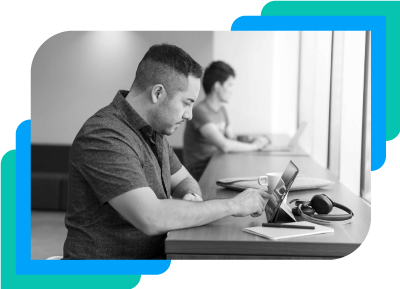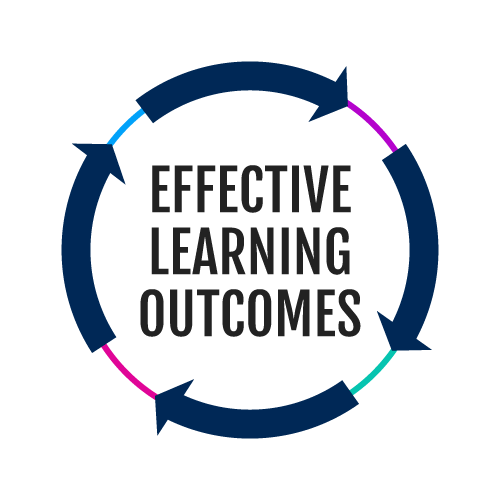Why blended learning is so important
We all learn in different ways, and a certain style of learning may not suit one person as well as it does another, so the use of blended learning is an important way to increase learner knowledge retention.
Remember, it’s vital to cater for all kinds of learners in your delivery programmes. That means switching up your style and providing a variety of training methods so each person can learn in a way that best suits them.
Here we’ve outlined the different ways in which people learn and why it’s so important to cater to all of them.

The different learner types
Auditory learners
These types of learners pick up information most easily when it’s presented with sound. This means they thrive in lectures, will probably ask questions and are usually good at explaining things themselves.
Get the most out of auditory learners by encouraging them to get involved with discussions, podcasts and watching videos.
Visual learners
Visual learners will absorb information best by seeing and observing it. This means they learn through diagrams and pictures, learning through sight and preferring to take in knowledge visually.
To cater to visual learners, use plenty of diagrams and images to help explain what you’re discussing. Animated videos also provide engaging overviews.
Kinaesthetic learners
Kinaesthetic learners prefer to learn by experiencing things for themselves, using their hands or acting out events.
You can satisfy kinaesthetic learners by getting them active and moving around a space – not sitting still for long periods of time.
Also consider scenario based learning – both digital and role play style activities.
Reading and writing learners
Reading and writing learners thrive when getting their information through articles, books and written words.
This more traditional style of learning is what suits them best, and they may also want the opportunity to frequently make notes.
Workbooks, both digital and printed as well as reflective exercises provide great supportive tools.
Catering for all learner types
So the more you diversify your delivery, the more engaged and motivated learners will feel. Our experience in delivering blended learning solutions for clients has led to the development of a framework we call BLISS – or Blended Learning Integrated Support System.
The centre of this framework – Effective Learning Outcomes – is the start point and is critical to delivering successful training.
For example, what performance improvements do you want to see as a result of going through the training, or what new skills do team members need to be more effective in their role?

Experience shows us that a combination of the four different delivery styles will provide the most effective learning experiences.
FORMAL INSTRUCTOR LED
Includes classroom, workshops and coaching often led by a subject matter expert. The benefit of this approach is that it provides opportunities for group interaction as well as the ability to introduce practical activities.
FORMAL SELF-SERVICE
Usually focused around online or elearning activities and enables the use of digital delivery and formalised assessments. It’s both a cost effective and scalable approach that enables the learner to learn at a time, place and pace that suits them best.
INFORMAL LEARNING
Is usually learner led and more of a social style of learning whereby the learner takes control of their own educational needs. These could include Ted Talks, podcasts and webinars as well as peer to peer forums.
ON THE JOB AND EXPERIENTIAL LEARNING
Provides the learner with resources and learning opportunities directly in the workplace. These could be job aids or training manuals that are used directly at the point of activity. For example, posters outlining a defined process flow, checklists to ensure no points are missed or even the use of AR or VR on a process line. You could also consider job shadowing and mentoring.
Try and overcome any individual preferences for a certain type of delivery, and instead, look at how you can combine a mixture of learning activities and approaches to increase engagement and maximise learning outcomes.
off-the-shelf approach, and your learners will thrive!
Consider how you could deliver multiple learning touchpoints for your learners, and why not try mixing activities from the ideas below for your next learning project and see if they enhance engagement and learning outcomes.
Self Led Options
ü Online courses
ü Learning pathways
ü Presentation decks
ü Explainer videos & training videos
ü Interactive videos
ü Audio podcasts
ü Knowledge checks & quizzes
Facilitated Options
ü Classroom
ü Workshops
ü Action learning groups
ü Coaching
ü Mentoring
ü Peer group sessions
ü Job shadowing
Learner Support Resources
ü eBooks
ü Interactive PDFs
ü Guides & checklists
ü Infographics
ü Doodle graphics
ü Job aids
ü Course workbooks
